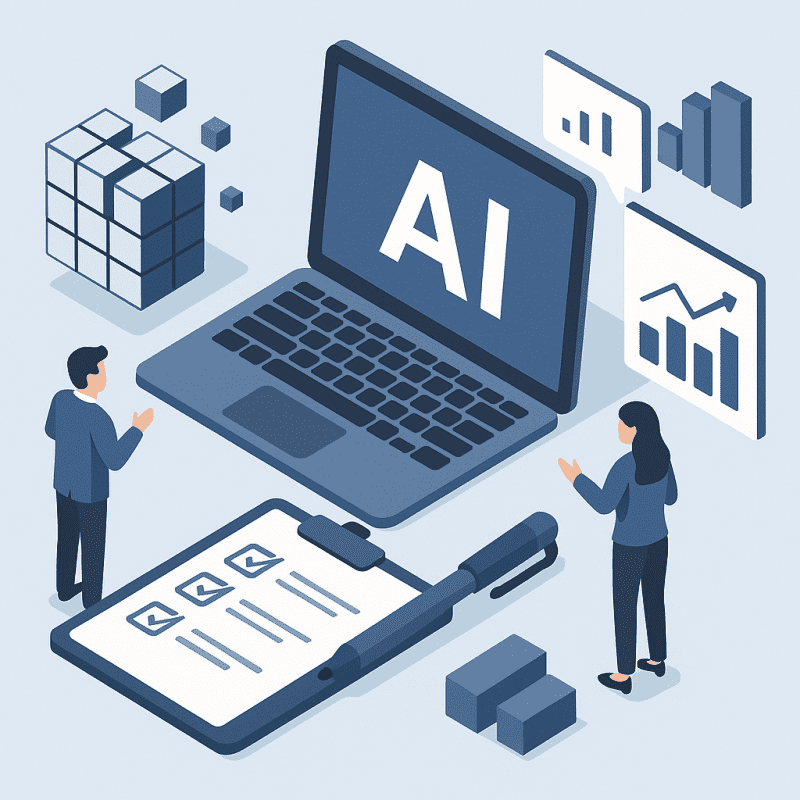Table of Contents Show
AI is no longer a futuristic buzzword – it’s a boardroom imperative. From automating operations to powering customer service chatbots and predicting consumer behavior, artificial intelligence has made its way into nearly every modern business strategy. Yet, for all the buzz and investment, one uncomfortable fact remains:
Most AI projects fail. And contrary to popular belief, the reason isn’t money.
It’s people.
Let’s be clear: the biggest barrier to AI success isn’t budget, hardware, or even data. It’s the human factor – namely, the lack of clarity, alignment, and change-readiness in the people tasked with making AI work.
This article will unpack the problem, the underlying causes, and the uncomfortable truths that most companies ignore – until it’s too late.
1. The AI Hype Trap
Companies rush into AI expecting miracles. And often, those projects crash not because they lack funding, but because they were launched with:
- Vague goals
- Unrealistic expectations
- No plan to integrate AI into actual workflows
AI isn’t magic. It’s math. It’s logic. It needs structure, training data, stakeholder buy-in, and a clear use case. Yet time and again, organizations launch AI pilots as side experiments – sandbox toys rather than mission-critical solutions. Then they’re surprised when they don’t scale.
According to a 2023 report from Gartner, up to 85% of AI projects never make it into production. The reason? It’s not the model. It’s not the budget. It’s a combination of poor planning, weak leadership, and organizational resistance.
2. The Real Bottleneck: Change Resistance
Most organizations underestimate how disruptive AI actually is.
It threatens status quos. It redefines workflows. It forces teams to think differently. And – here’s the tough part – it changes who holds power and expertise.
That’s where the real friction lies.
A department may welcome AI in theory but resist it in practice when it:
- Automates work they take pride in
- Exposes inefficiencies they’d rather hide
- Requires them to retrain or adopt new tools
You can’t buy your way out of that kind of resistance. You have to manage it – and most companies don’t.
3. Talent Mismatch and the AI Illusion
There’s a common belief that you can just hire a couple of data scientists and become “AI-ready.”
Wrong.
Here’s the reality:
| Myth | Reality |
|---|---|
| “We hired data scientists, we’re good to go.” | Data scientists aren’t magicians. They need domain experts, product managers, data engineers, and most importantly – organizational buy-in. |
| “We’ll start with a pilot and scale fast.” | Most AI pilots get stuck because the pilot wasn’t aligned with real business needs. |
| “Our people will adopt whatever we build.” | Adoption is the Achilles’ heel of most AI tools. Without user trust and training, tools collect dust. |
Many companies mistake a tech investment for an operational transformation. But AI isn’t a bolt-on. It’s a rewiring of how you operate. That takes cross-functional alignment, not just clever coders.
4. Leadership Paralysis: Fear of Getting It Wrong
Executives love to talk AI in presentations. But ask who owns the project, and suddenly the enthusiasm dries up.
Why?
Because many leaders are afraid of looking uninformed. They delegate the responsibility down the chain. AI becomes “an innovation team problem” rather than a strategic initiative with C-suite sponsorship.
And when leadership won’t own the outcome, employees won’t own the execution.
In short: no one is driving the bus.
5. Communication Breakdown
AI often gets lost in translation. Data teams speak in models and metrics. Business teams speak in outcomes and KPIs. Without a translator – or better yet, a shared language – projects stall.
This is what AI project meetings often sound like:
Data team: “We’ve achieved 92% precision and recall.”
Business lead: “What does that mean for our churn rate next quarter?”
When these conversations misfire, trust breaks down. And once business leaders lose faith in the technical teams – or vice versa – momentum dies.
6. Culture: The Unseen Barrier
If your company doesn’t have a culture of experimentation, your AI efforts will suffer.
AI thrives in environments where:
- Failure is seen as learning
- Teams iterate fast
- Decisions are based on data, not gut feel
- People are rewarded for sharing knowledge, not hoarding it
Unfortunately, many companies still operate in siloed, hierarchical ways. AI can’t thrive in that. It needs cross-functional, collaborative teams.
Culture doesn’t change overnight. But if you ignore it, no tech investment will save you.
7. Data Is Not Enough (And Probably a Mess)
Let’s not kid ourselves – data quality is still a major problem.
Most companies’ data is:
- Inconsistent
- Siloed
- Poorly labeled
- Outdated
But the biggest issue isn’t just the data – it’s the data governance and ownership. Everyone wants to use the data, but no one wants to clean it, document it, or be responsible for it.
AI requires clean, relevant, and accessible data. That doesn’t happen by accident. It requires a coordinated effort across teams – and often, a shift in how data is valued and managed.
8. The Oversell Problem
Vendors and consultants often promise the moon. But AI is a long game. It rarely delivers immediate ROI – especially if your processes aren’t ready.
That doesn’t mean it’s a bad investment. It means you need to:
- Scope expectations appropriately
- Start with clear, measurable problems
- Iterate with small wins
- Set realistic adoption timelines
AI is transformational – but it’s not instantaneous. The companies that win with it treat it like a marathon, not a sprint.
9. Who Actually Owns the AI Strategy?
In many organizations, this is the awkward silence no one wants to break.
Should it sit with IT? The Chief Data Officer? The COO? A new Head of AI?
Too often, AI lives in a power vacuum. Multiple departments want input, but no one wants accountability.
The result? Projects drift. Decisions stall. Ownership is blurred.
Smart organizations solve this by creating cross-functional AI governance teams, with clear mandates and escalation paths. Everyone can have a seat at the table – but someone has to lead the discussion.
10. Trust: The Forgotten Ingredient
Let’s not ignore the human side of AI. If people don’t trust the outputs, they won’t use the tools.
You can have the most powerful model in the world, but if it spits out results that feel opaque or biased, people will ignore it – or worse, sabotage it.
Building trust requires:
- Transparency (how does the model work?)
- Fairness (are outcomes equitable?)
- Control (can users give feedback or override?)
AI must be seen as a partner, not a black box. And that takes deliberate effort – not just tech fixes.
11. So, What Does Work?
Here’s what the most successful AI-first companies do differently:
| Trait | Description |
|---|---|
| Strong executive ownership | The C-suite doesn’t just approve AI – they lead it. |
| Cross-functional teams | Business, tech, and data teams work side by side. |
| Clear use cases | Projects are tied to real, measurable business problems. |
| Change management planning | Adoption is designed into the rollout. Training, feedback loops, and incentives are planned. |
| Iterative mindset | Projects are delivered in sprints, with time for testing, learning, and adapting. |
| AI literacy at all levels | From frontline workers to senior leaders, people are taught what AI is and what it isn’t. |
This doesn’t just make AI projects more successful – it builds a foundation for long-term innovation.
12. It’s Time to Shift the Conversation
If your AI projects are stuck, don’t blame the model. Look at the environment it’s being dropped into.
- Are your teams aligned?
- Do you have shared ownership?
- Is your culture ready for the shift?
These are uncomfortable questions. But they’re the right ones. And they have nothing to do with budget.
AI will never reach its potential in an organization that’s not prepared to change. The sooner you recognize that, the better your odds.
As Harvard Business Review put it in a 2021 feature on AI transformation:
“Technology doesn’t transform organizations. People do.”
Source: Harvard Business Review – “Why So Many High-Profile Digital Transformations Fail”
Final Thoughts: Get the People Right First
Before you buy your next AI tool. Before you hire another data scientist. Before you greenlight another proof-of-concept.
Ask yourself:
- Do we have the leadership commitment to see this through?
- Do we have a shared, strategic purpose for this initiative?
- Are our people ready – not just to use AI, but to change how they work?
Because the hard truth is this:
AI doesn’t fail because it’s too expensive.
AI fails because we treat it like a plug-and-play product instead of what it really is – a deep, organization-wide shift.
If you want results, start with your people.
That’s the one thing holding most AI projects back. And it’s the only thing that can move them forward.
Further Reading








